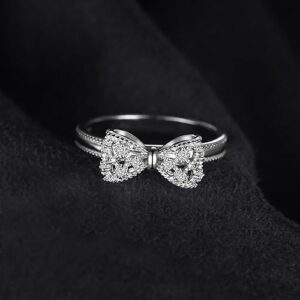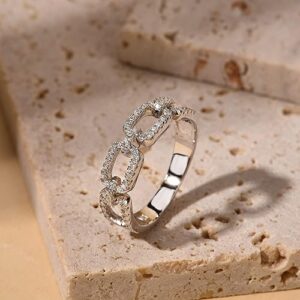Gold has been the ultimate symbol of luxury and beauty for thousands of years. From ancient Egyptian pharaohs to modern Hollywood stars, this precious metal continues to captivate hearts and elevate personal style.
But here’s where many people get stuck: choosing the right gold color for their jewelry.
Picking between white gold, yellow gold, and rose gold isn’t just about what looks pretty in the jewelry case. Your choice affects everything from maintenance needs to how well it matches your skin tone and personal preference.
The three main types of gold jewelry – white gold, yellow gold, and rose gold – each have key differences that can make or break your jewelry experience. Choose wisely, and you’ll have pieces you’ll treasure forever. Choose poorly, and you might end up with expensive jewelry that sits unused in your drawer.
This complete guide about White Gold vs Yellow Gold vs Rose Gold will walk you through everything you need to know about these gold types, so you can make an informed decision that you’ll love for years to come.
Table of Contents
Gold Jewelry Basics: Karats, Alloys and Gold Color
White, Yellow and Rose Gold: What’s the Difference? (How Alloys Change Color)
Here’s something that surprises most people: pure gold is always yellow. Always. That beautiful white gold ring or the trendy rose gold bracelet you love? It all starts from the same base — 24k yellow gold.
But pure gold (24 karat gold), while luxurious and valuable, has a big drawback: it’s incredibly soft and malleable. Imagine trying to craft a ring out of butter — it would bend, scratch, and lose its shape almost immediately. That’s why pure 24k gold jewelry isn’t ideal for most people, especially for pieces like wedding bands or daily wear rings that need to be durable.
So by mixing harder alloy metals with pure gold, jewelers create a durable option that can withstand daily wear while maintaining excellent investment value.
Now, let’s explore how different gold colors are created. The magic happens when jewelers mix pure gold with different alloy metals — a process called alloying. This not only increases its strength but also changes its color. For example:
- Mixing yellow gold with white metals like palladium or nickel creates white gold, which has a sleek, modern look similar to platinum.
- Mixing gold with copper content gives us rose gold, known for its romantic pinkish hue.
So, the color of your gold jewelry — whether it’s white, yellow, or rose gold — depends entirely on which metals are added and in what proportions. These variations don’t just impact the look; they also affect durability, allergy risk, maintenance, and even resale value.
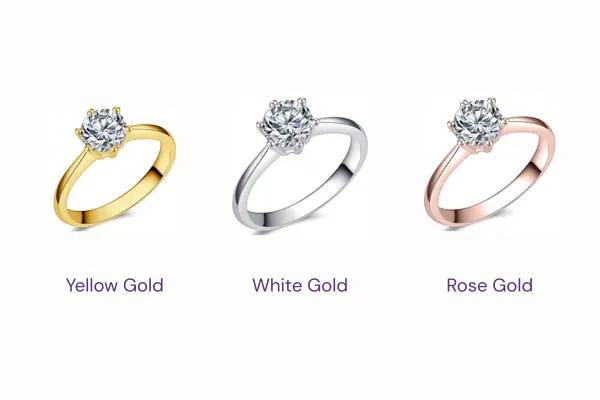
Gold Karat Guide: 10K vs 14K vs 18K – What’s Best for You?
The karat system tells you how much pure gold is in your jewelry. Here’s the simple breakdown for karat gold:
- 24k Gold: 100% pure gold (purest form but too soft for most jewelry)
- 18 karat gold: 75% pure gold, 25% alloy metals (premium quality)
- 14k Gold: 58.3% pure gold, 41.7% alloy metals (most popular choice)
- 10k Gold: 41.7% pure gold, 58.3% alloy metals (budget-friendly option)
Higher karat means more gold content, which usually means higher price but softer metal. Lower karat means more durability but less gold content.
What Is White Gold? The Modern Precious Metal
White gold is a precious metal alloy created by combining pure gold with white metals such as nickel, palladium, platinum, or manganese, then finished with a thin layer of rhodium coating to achieve its distinctive silvery-white appearance.
This type of gold offers a modern look that’s virtually identical to platinum but at a more affordable price tag. White gold engagement rings are particularly popular because the white color enhances diamond brilliance and creates a sleek modern aesthetic.
Key characteristics of white gold:
- Requires rhodium plating for maintenance
- Ideal choice for contemporary designs
- May cause allergic reactions to metals in those with nickel sensitivity
- Popular for wedding bands and fine jewelry
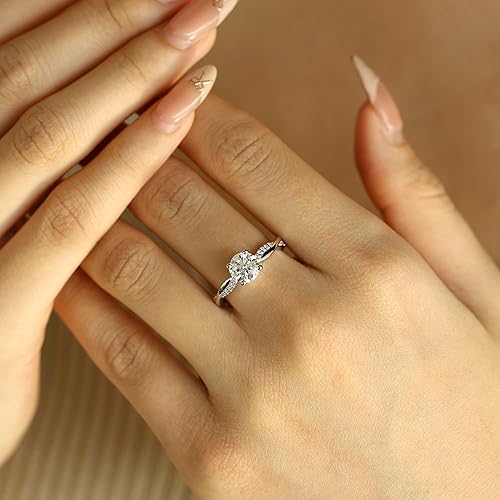
What Is Yellow Gold? Timeless Classic for Luxury and Tradition
Yellow gold is a precious metal alloy composed of pure gold mixed with complementary metals such as copper, silver, and zinc, maintaining gold’s natural warm golden color while enhancing its strength and durability for jewelry production.
This classic choice has been treasured since ancient times and remains the traditional option for engagement rings and wedding jewelry. Yellow gold jewelry is naturally hypoallergenic, especially in higher karat weights, making it the best choice for those with sensitive skin or metal allergies.
Key characteristics of yellow gold:
- Naturally hypoallergenic in higher karats (like 22k and 24k gold)
- Requires minimal maintenance requirements
- Perfect for warm skin tones
- Offers vintage charm and Old World glamour
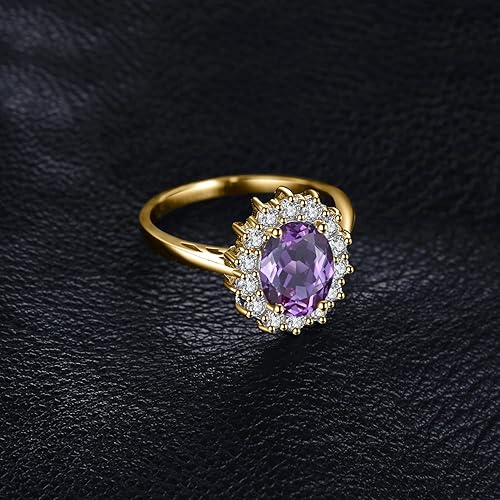
What Is Rose Gold? Romantic Beauty with Exceptional Strength
Rose gold is a distinctive precious metal alloy created by combining pure gold with a higher proportion of copper (and sometimes small amounts of silver), producing the characteristic warm pink, rose, or reddish pinkish hue that gives this metal its romantic appeal.
Originally popularized in 19th century Russia by Carl Fabergé, rose gold offers unique look that’s both trendy and timeless. The copper content makes rose gold the most durable of all gold colors, providing excellent scratch resistance for everyday wear while maintaining superior investment value.
Key characteristics of rose gold:
- Most durable and scratch-resistant gold type
- Suitable for all skin tones
- Minimal maintenance requirements
- Perfect for vintage-inspired designs
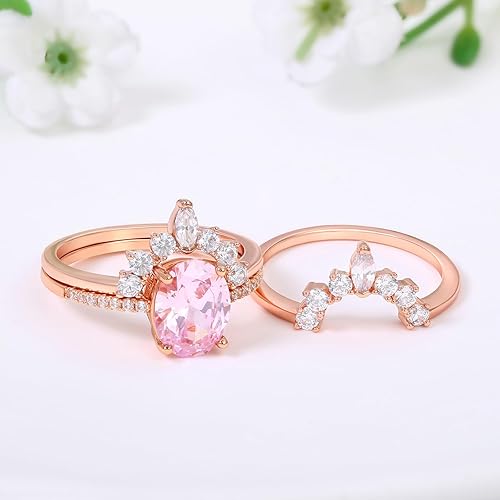
White Gold vs Yellow Gold vs Rose Gold: Complete Comparison
Choosing between white gold, yellow gold, and rose gold isn’t just about color — it’s about composition, durability, maintenance needs, skin compatibility, and overall style.
Let’s break down each feature in the table and explain what it means for your jewelry decision.
| Factor | White Gold Jewelry | Yellow Gold Jewelry | Rose Gold Jewelry |
|---|---|---|---|
| Base Metal Composition | Pure gold mixed with palladium, nickel, or platinum alloys for strength and a sleek silver-like tone. | Pure gold blended with copper, silver, and sometimes zinc to maintain its warm, traditional look. | Pure gold combined mainly with copper alloys (and a touch of silver) for its rosy-pink color. |
| Natural Color | Silvery-white shade, enhanced by rhodium plating for extra shine and protection. | Classic warm golden yellow, the most traditional and timeless gold color. | Pinkish-rose to rich copper-red tone, often seen as romantic and vintage-inspired. |
| Durability Rating | High (4/5) – strong and Scratch resistant when plated with rhodium. | Medium (3/5) – softer in higher karats like 22k or 24k. | Highest (5/5) – copper content makes it the most durable of the three. |
| Maintenance Needs | High – requires re-plating every 1–2 years to maintain color. | Low – only needs occasional cleaning to keep its shine. | Very Low – minimal upkeep; polish occasionally for luster. |
| Allergy Risk | Moderate – nickel alloys may trigger reactions in sensitive skin. | Low – especially in 18k gold or higher purity, making it a hypoallergenic jewelry choice. | Low to Moderate – generally safe, but those with copper sensitivity may react. |
| Price Range | Medium to High – slightly less costly than platinum but more than yellow gold in some cases. | Medium – affordability depends on karat purity. | Low to Medium – often the most budget-friendly gold option. |
| Best for Skin Tones | Best for cool undertones – enhances fair or rosy complexions. | Best for warm undertones – flatters olive, tan, or darker skin. | Universal appeal – complements all skin tones beautifully. |
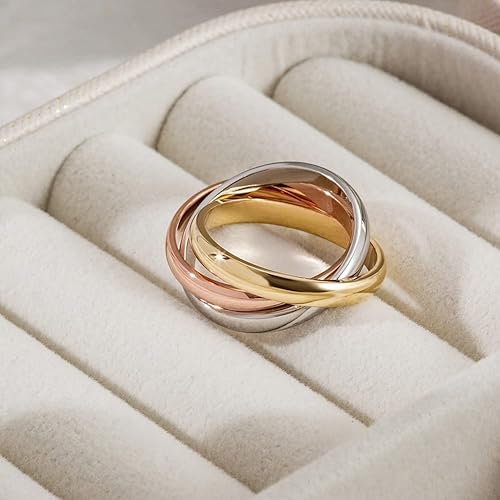
Best Gold Color for Your Skin Tone: White, Yellow, or Rose Gold?
- White Gold Is an Ideal Choice for Cool Skin Tones: If you have cooler skin tones, white gold will enhance your natural coloring and make your skin look brighter and more radiant. The silvery-white color complements cool undertones perfectly, creating a harmonious look that’s both elegant and modern.
- Yellow Gold’s Natural Harmony Warmer skin tones: Naturally harmonize with yellow gold’s rich, golden hue. This combination makes your skin look healthy, radiant, and naturally glowing. The warm color of the gold enhances your natural warmth without competing with your skin’s undertones.
- Rose Gold’s Universal Appeal (For All Skin Tones): Lucky you if you have neutral undertones! Rose gold works beautifully on all skin tones, making it a versatile choice. The pink gold adds warmth without clashing with cool elements, while the blush tone complements warm undertones equally well.
How to Check Your Skin Tone to Match the Perfect Gold Jewelry? Easy 30-Second Skin Tone Test: Look at your wrist in natural light and examine your veins:
- Blue or purple veins = Cool undertones → Choose White Gold
- Green or olive veins = Warm undertones → Choose Yellow Gold
- Mix of both = Neutral undertones → Any gold works, Rose Gold especially flattering
Maintenance Requirements by Gold Type
- White Gold requires the most care. You’ll likely need to rhodium replate it every 12–18 months if worn daily.
- Yellow Gold is low maintenance. Just clean and polish occasionally to keep it shiny.
- Rose Gold is the easiest — thanks to copper’s natural durability, it requires minimal maintenance and holds up well over time.
Gold Jewelry Durability: Best Gold Types for Everyday Wear
- Rose Gold takes the crown for durability. The high copper content makes it harder and more scratch-resistant than other gold types, perfect for daily wear.
- White Gold offers good durability due to hard alloy metals, but requires professional re-plating every 12-18 months to maintain its appearance.
- Yellow Gold is softer, especially in higher karats (22k-24k), making it more prone to scratches but easier to repair and resize.
Which Gold Type Is Hypoallergenic?
- White Gold may cause allergic reactions, especially if it contains nickel. Not ideal for people with sensitive skin.
- Yellow Gold, especially in 18k, 22k or 24k, is often hypoallergenic, making it suitable for almost everyone.
- Rose Gold is less likely to cause allergic reactions but may still trigger issues in those highly sensitive to copper.
Weight and Feel Differences
Due to their different alloy compositions, each gold type may also feel slightly different in weight and texture when worn.
- White Gold mixed with palladium can feel lighter but stronger. With nickel, it can feel heavier and firmer, giving substantial presence on the hand.
- Yellow in high karats like 22k or 24k is often softer and more malleable, so the jewelry might feel a bit more delicate and traditional in hand.
- Rose Gold feels denser and more solid due to high copper content, giving it a sturdier feel that many people find reassuring for daily wear.
Price Differences: White vs Yellow vs Rose Gold Costs Explained
- White Gold is often more expensive than yellow and rose gold because of the rhodium plating process and the use of premium alloy metals like palladium.
- Yellow Gold is typically less expensive to produce, especially in lower karats (like 14k), because it doesn’t require plating or complex finishing processes.
- Rose Gold is often the most budget-friendly, especially in 14k versions, since copper is an affordable metal that is easy to find and low in cost.
Which Gold Color Suits You Best?
- White Gold is perfect for those who love a modern aesthetic, want a platinum-like look, or are pairing it with cool-colored gemstones or white diamonds.
- Yellow Gold is ideal for those who prefer a classic, vintage, or traditional style — great for heirloom pieces, wedding bands, and cultural jewelry.
- Rose Gold works best for people who want something unique, romantic, and trendy. It also complements feminine designs, floral motifs, and warm undertones.
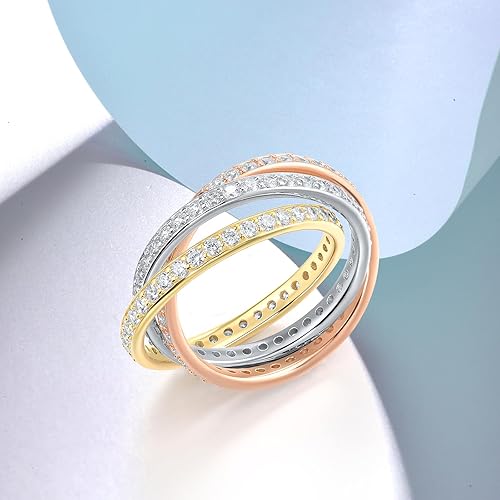
How to Choose the Best Gold Color: Buying Guide
When to Choose Yellow Gold?
Yellow gold is perfect for you if:
- You love traditional, timeless jewelry styles
- You have warm skin undertones
- You suffer from metal allergies or have sensitive skin
- You prefer low-maintenance jewelry
- You’re choosing a classic engagement ring or wedding band
- You want jewelry that will look amazing for generations
When to Choose White Gold?
White gold is perfect for you if:
- You love modern, contemporary jewelry styles
- You have cool skin undertones
- You want the platinum look at a lower price point
- You don’t mind periodic maintenance
- You’re setting diamonds or colorless gemstones
- You prefer versatile pieces that work with any outfit
When to Choose Rose Gold?
Rose gold is perfect for you if:
- You love romantic, feminine aesthetics
- You want something unique but not too bold
- Durability is a top priority
- You’re drawn to vintage-inspired or bohemian styles
- You want jewelry that photographs beautifully
- You’re looking for something trendy yet timeless
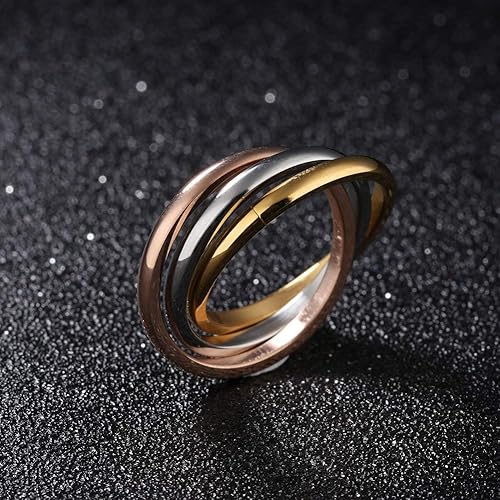
Pros and Cons of white gold , yellow gold and rose gold
| Type of Gold Jewelry | Pros | Cons |
|---|---|---|
| White Gold Jewelry (Modern and Elegant White-Toned Gold) |
• Sleek and modern appearance, similar to platinum • Pairs beautifully with diamonds • Strong and resistant to scratches • Top choice for engagement rings and bridal jewelry |
• Needs rhodium plating every 12–24 months to maintain shine • May cause allergic reactions (if nickel is used in the alloy) • Base metal has a yellow tint without plating • Ongoing maintenance can be costly |
| Yellow Gold Jewelry (Classic and Traditional Gold Look) |
• Timeless and warm yellow appearance • Naturally hypoallergenic (in higher purities like 18k or 22k) • No need for additional plating • Easier to resize and repair |
• Softer than white gold (especially in 22k–24k), more prone to dents and scratches • Some people find it less modern or versatile • Visible wear and tear in daily use |
| Rose Gold Jewelry (Romantic Pink-Toned Gold Alloy) |
• Trendy blush-pink tone with a vintage feel • Strong and long-lasting (copper alloy adds durability) • No rhodium plating needed • Flatters all skin tones, especially fair and neutral |
• Not hypoallergenic (contains copper, may cause irritation) • Rose color may deepen slightly over time • Limited availability in high-end designer lines |
Frequently Asked Question's
White gold is often considered the top choice for engagement rings. Its bright, modern shine beautifully enhances the brilliance of diamonds, making the center stone appear more radiant. It’s also more affordable than platinum while offering a similar luxurious look. However, yellow gold is a timeless classic and preferred by those who love a vintage or traditional aesthetic. Rose gold is ideal for a romantic, unique twist — its warm, blush tone stands out and flatters all skin tones.
Ultimately, the best choice depends on personal preference, budget, and skin sensitivity.
Not at all — rose gold started as a trend but has proven it’s here to stay. Its soft, romantic hue appeals to modern tastes and has become a staple in both fashion and fine jewelry. While it gained massive popularity in recent years, its origins date back to the 19th century in Russia (hence the nickname “Russian gold”).
It combines vintage charm with a modern feel, making it a lasting favorite for many.
Yellow gold typically holds its value the best over time because it’s the closest to gold in its pure form and doesn’t require additional plating or maintenance. White gold and rose gold are alloys — they’re mixed with other metals and often need re-plating (especially white gold).
If long-term value and easy resale are your priorities, yellow gold is a safe investment.
Absolutely — mixing white, yellow, and rose gold is not only acceptable but stylish! The tri-color combination adds depth, personality, and creativity to your jewelry look. Many designers and brands now offer mixed-metal pieces that are cohesive and fashionable.
Mixing gold tones lets you express yourself and wear a variety of jewelry without clashing colors.
Technically, you can’t completely change one type of gold into another, but there are a few things you can do to alter the appearance:
- White gold can be re-plated with rhodium to restore its bright white finish if it fades over time.
- Yellow gold can be coated with rhodium to give it a white gold look — but this is only a surface treatment, not a full transformation.
- Rose gold and yellow gold cannot be changed into white gold or vice versa because their color comes from the metal alloys mixed in during creation.
So while you can adjust the color with plating, the base gold type (white, yellow, or rose) stays the same.
Conclusion: Your Perfect Gold Color Awaits
Congratulations! You now have all the information needed to make a confident decision about gold colors. Whether you choose the timeless elegance of yellow gold, the modern sophistication of white gold, or the romantic charm of rose gold, you’re investing in pieces that will bring joy for years to come.
Remember, there’s no “wrong” choice when it comes to gold types – only what’s right for your personal style, skin tone, lifestyle, and budget. The most beautiful jewelry is the kind that makes you feel confident and happy every time you wear it.
Your perfect gold color is the one that makes you feel like the best version of yourself. Choose with confidence, and you’ll never regret your decision. Your ideal piece of fine jewelry is waiting for you to discover it.

